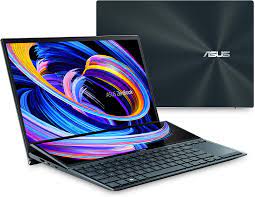Are you in the market looking for a new laptop? With so many options available, it can be overwhelming to select the right one. However, if you’re looking for a high-quality, top-performing laptop, you may consider laptops like the Asus Zenbook. When buying a laptop, there are a lot of factors to consider. From the specifications to the style, it can be overwhelming to navigate through all the options available in the market. To give you ease, this article will guide you through a step-by-step process of buying your next laptop, from understanding your needs to selecting the best option. Read on!
Assess Your Needs
The first step in buying a new laptop is to assess your needs. What are you going to use your computer for? Will you use it for basic tasks such as browsing the internet, sending emails, and editing documents? Or will you use it for more demanding gaming or video editing tasks? Your needs will determine the type of laptop you should be looking for.
If you are a student, you may need a lightweight, portable laptop that is easy to carry. On the other hand, if you are a gamer or a graphic designer, you may need a computer with a powerful graphics card and a high-quality display.
Set a Budget
Laptops and desktops come in a wide range of prices, from budget-friendly options to high-end models. Setting a budget will help narrow your choices and ensure you are not overspending.
It’s important to remember that while a higher price tag may indicate better performance, it doesn’t necessarily mean that the laptop is the best option for you. It’s essential to consider the specifications and features you need rather than simply opting for the most expensive option.
Consider the Specifications
The specifications of a laptop are crucial in determining its performance. Here are some key specifications to consider:
- Processor: The processor is the laptop’s brain and determines how fast it can process data. Intel and AMD are the two main processor brands, with Intel typically being more expensive but also more powerful.
- RAM: RAM stands for Random Access Memory and keeps programs and files open while you use them. The more RAM a laptop has, the more programs it can run simultaneously.
- Storage: The storage of a laptop determines how much data it can hold. There are two main types of storage: hard disk drives (HDDs) and solid-state drives (SSDs).
- Graphics Card: A dedicated graphics card is essential if you use your laptop for gaming or graphic design. Nvidia and AMD are the two main graphics card brands.
Consider Additional Features
There are additional features and accessories to consider when buying a laptop. These include
- Battery Life: Long battery life is crucial if you use your laptop on the go. Look for laptops with a battery life of at least 8 hours.
- Ports and Connectivity: Consider the number and type of ports the laptop has, such as USB, HDMI, and Ethernet ports. Also, consider the Wi-Fi and Bluetooth connectivity options.
- Webcam and Microphone: A high-quality webcam and microphone like that of the Asus Zenbook are essential if you use your laptop for video conferencing or online classes.
Buying a laptop can be daunting, but by following these steps, you can navigate the options available and select the best laptop for your needs. Remember to assess your needs, set a budget, consider the specifications and design, consider additional features, and purchase from a reputable retailer. With some research and consideration, you can find the perfect laptop that will meet your needs and last for years.









